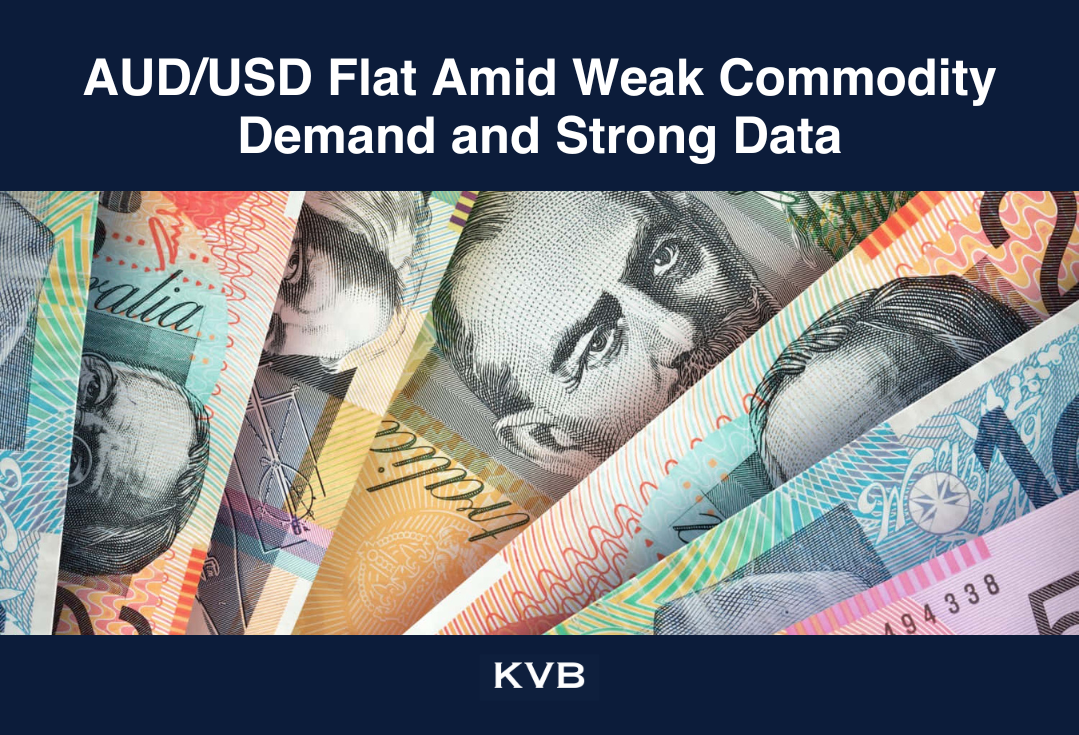


Australian Dollar Struggles Despite Positive Domestic Data
The Australian dollar (AUD) has remained relatively flat against the US dollar (USD) on Tuesday, as investors grapple with mixed market sentiment. Despite positive domestic economic data, the Australian currency is under pressure due to weaker global demand for key commodities, a significant driver of Australia's economy. The AUD/USD pair is holding steady near recent levels, with a lack of major catalysts providing any clear direction for traders.
Mixed Market Sentiment Weighs on the AUD
Global sentiment has been mixed recently, with concerns about slowing economic growth in major economies weighing heavily on market outlooks. For Australia, a country heavily reliant on exports of natural resources such as iron ore, coal, and natural gas, weakening demand for these commodities has added pressure to the Australian dollar. While Australia's domestic economic data continues to show resilience, the external headwinds created by global demand dynamics have kept the AUD's upward momentum in check.
The Australian Bureau of Statistics recently reported strong domestic growth, with employment figures continuing to show positive trends and consumer confidence remaining robust. However, these local factors have been unable to offset the bearish impact of global market conditions, leaving the Australian dollar in a precarious position.
"The domestic economy is in better shape than many other regions, but it's hard to ignore the challenges Australia faces from global demand for its key exports," noted an economist at a global investment firm. "The combination of a strong US dollar and weaker demand for commodities is preventing the AUD from seeing any significant gains."
Commodity Dependence: A Double-Edged Sword for the AUD
As a major exporter of raw materials, Australia's economic health is tightly linked to the global demand for commodities. Over the past few months, slowing industrial activity in key markets like China and Europe has led to reduced demand for Australian exports, putting downward pressure on the AUD. Even with strong economic growth figures on the domestic front, the Australian dollar's reliance on commodities remains a major vulnerability.
Iron ore, Australia's largest export, has faced price volatility amid softer demand from China, the world’s biggest consumer of the metal. Additionally, coal prices have fluctuated as global energy demand has softened. Natural gas, another major Australian export, has been under pressure from ongoing supply chain disruptions and reduced global demand. These factors have translated into weaker terms of trade, contributing to the Australian dollar's struggles.
"Australia’s reliance on commodities is a double-edged sword," explained a senior analyst at a commodity trading firm. "When the global economy slows down, it impacts the demand for resources, and that directly affects the value of the AUD."
US Dollar Continues to Dominate
The USD continues to dominate in the forex market, supported by its safe-haven status amid global uncertainties. The US dollar has benefited from its role as the world’s primary reserve currency, with investors flocking to USD-denominated assets in times of geopolitical tension and economic instability. Additionally, the Federal Reserve's cautious stance on interest rate hikes has bolstered the dollar’s attractiveness in a low-rate environment.
The strength of the US dollar has created further challenges for the AUD, as it competes against the greenback in the global marketplace. For investors, the USD remains the preferred currency in the current climate, given the relative stability of the US economy and its dominance in global trade.
Outlook for the AUD/USD
Looking ahead, the outlook for the AUD/USD pair remains uncertain. On one hand, the Australian economy continues to demonstrate resilience, with strong domestic data suggesting that the labor market and consumer spending are holding up well. On the other hand, the ongoing global demand concerns for key commodities are likely to limit the upside potential for the Australian dollar.
In the short term, the AUD/USD pair is expected to remain in a narrow range, with key technical levels providing potential support and resistance. The 0.6600 mark has served as a key support level for the Australian dollar, while resistance remains near the 0.6700 level. Investors will be closely monitoring global commodity price trends and any shifts in US economic data to gauge the next move for the pair.
If global demand for commodities shows signs of recovery, the Australian dollar could benefit from a rebound in export revenues, potentially pushing the AUD higher. Conversely, if trade tensions continue to weigh on the global economy, the AUD may struggle to maintain its current levels, especially with the strong USD acting as a headwind.
"While domestic data suggests the Australian economy is holding up well, the outlook for the AUD will largely depend on the global demand for commodities," stated an FX strategist. "If commodity prices stabilize or rise, the AUD could see some upside, but for now, it faces a difficult road ahead."
Conclusion
The Australian dollar continues to face headwinds despite positive domestic economic data, primarily due to weaker global demand for key commodities. As global growth concerns persist and the US dollar remains strong, the AUD/USD pair is expected to trade within a narrow range in the near term. Investors will be closely monitoring global commodity price movements, along with any shifts in economic data from both Australia and the US, to determine the next direction for the Australian currency.
Derivative investments involve significant risks that may result in the loss of your invested capital. You are advised to carefully read and study the legality of the company, products, and trading rules before deciding to invest your money. Be responsible and accountable in your trading.
RISK WARNING IN TRADING
Transactions via margin involve leverage mechanisms, have high risks, and may not be suitable for all investors. THERE IS NO GUARANTEE OF PROFIT on your investment, so be cautious of those who promise profits in trading. It's recommended not to use funds if you're not ready to incur losses. Before deciding to trade, make sure you understand the risks involved and also consider your experience.
